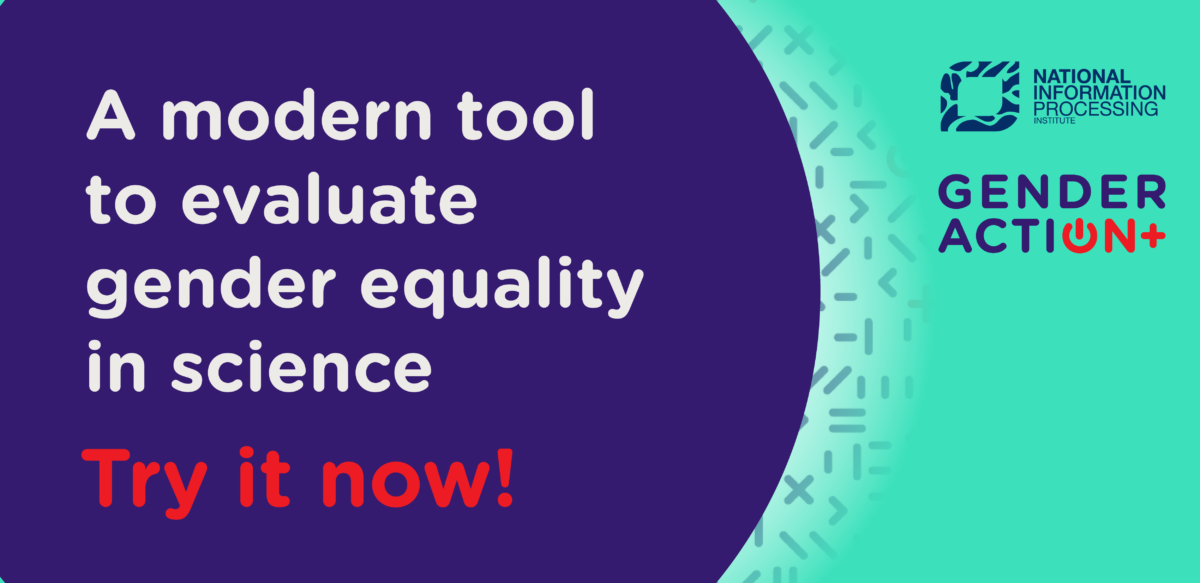Experts at the National Information Processing Institute (OPI) have released a new version of their dashboard that evaluates gender equality in science. In addition to a data update, the latest version incorporates new reports that illustrate the circumstances of researchers in the business sector, and facilitate the comparison of information between individual countries and groups of countries. Data on scientific excellence is also included: the Adjusted Research Excellence Index reflects the quality of research and scientific achievements in all European Union (EU) member states. The OPI dashboard has been developed as part of the GENDERACTIONplus project and is available to the public at https://genderaction-data-dashboard.opi.org.pl/#/.
A modern tool to evaluate gender equality
Gender equality holds great significance in the EU. This approach was outlined explicitly inHorizon 2020, a framework programme that allocated funding to the GENDERACTION project, and it is reaffirmed in the latest Horizon Europe programme, under which the GENDERACTIONplus project is being implemented. As part of the project, one of OPI’s responsibilities is to develop a cutting-edge IT tool in the form of a dashboard to evaluate gender equality in the science sector.
‘I am very pleased that, by participating in the GENDERACTIONplus project, OPI has the opportunity to develop a modern IT tool that plays a crucial role in shaping strategies to overcome the gender gap in the science sector. Our dashboard relies solely on dependable data, and its ease of use makes it accessible for everyone to compare the circumstances of women in the science sector across all EU countries,’ says Dr Aldona Tomczyńska, assistant professor and leader of the Data Science Team at OPI. ‘The tool was developed by a team of experts who are proficient in information technology and data analysis. We strived to make the dashboard as intuitive as possible, ensuring rapid access to information for all users. We have also enhanced the website layout and introduced a new feature, the adjusted research excellence index, which serves as a reliable means of comparing research quality across all EU countries,’ adds Dr Tomczyńska.
The dashboard relies solely on dependable data that is collected from external sources, such as Eurostat, OECD, UNESCO, and She Figures. The data is categorised into four sections: students, graduates, individuals employed in the research and development sector, and researchers—with distinct indexes created for each section. The tool enables comparison of the circumstances of women in Polish science with those in other EU member states. It also facilitates the collection of information on the connection between gender equality and innovation in specific countries.
The glass ceiling index is diminishing gradually
Over the years, a notable trend in Polish science has been the diminishing presence of women in the higher echelons of academia. The glass ceiling index (GCI) demonstrates that, in contrast to men, very few women achieve the title of professor. A GCI value of 1 indicates gender equality, while higher values denote a reduced presence of women in senior positions in science. For instance, in the case of public universities of technology, the GCI value of 1.88 means that women are nearly half as likely as men to achieve the highest academic rank. According to OPI dashboard data, the circumstances of female professors in Poland are similar to those of women in other EU member states (25.2% vs. 26.0%, respectively).
‘An examination of the data available on the OPI dashboard reveals a positive trend. The GCI, which reflects the challenges women face in attaining the rank of professor, is declining steadily in almost all EU member states. It is evident, however, that men continue to dominate technical sciences and engineering, which are crucial for advancing socioeconomic development,’ says Dr Anna Knapińska, assistant professor at the Laboratory of Databases and Business Analytics at OPI. ‘Our dashboard also includes a new report on researchers in the business sector. The report’s data suggests that the business sector is much less balanced in terms of the number of male and female researchers than the science and higher education sector is. In many countries, men are significantly better represented in industry and new technologies, while women dominate public administration, education, and healthcare,’ adds Dr Knapińska.
The OPI dashboard has been developed as part of the GENDERACTIONplus project and has been financed by the European Union under the Horizon Europe – Research and Innovation programme. It has been implemented under Grant Agreement No. 101058093. The project consortium comprises twenty-six organisations and fourteen partners from twenty-one countries. The project is coordinated by theCentre for Gender and Science at the Institute of Sociology of the Czech Academy of Sciences in Prague. OPI, which collaborates closely with the Polish Ministry of Education and Science, is the Polish partner of the project.
